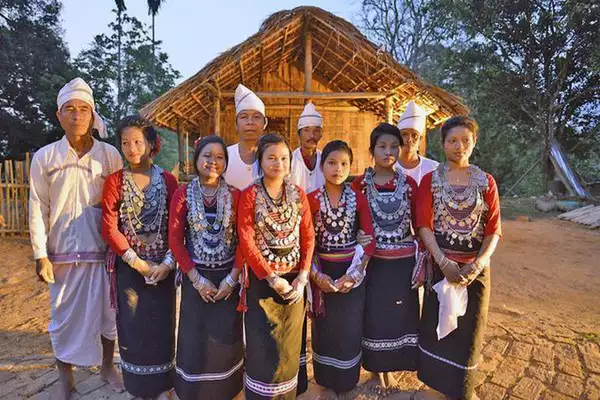The Tripura government recently completed the settlement of the last batch of Mizoram Bru Tribe, adhering to the quadripartite agreement signed earlier, under the initiative of the Ministry of Home Affairs (MHA).
What caused migration of Bru Tribes and what are its aftermath?
- Historically, the Bru community has faced displacement due to ethnic tensions, leading to their migration to neighboring states.
- In 1997, ethnic tensions forced the Bru (Reang) tribe to flee Mizoram.
- The MHA, along with Tripura and Mizoram governments, signed a quadripartite agreement in 2020 for the permanent settlement of 6,959 Bru families in Tripura.
Settlement Process:
- Permanent settlement involved 12 locations across 4 districts in Tripura.
- Ongoing efforts includes provision of electricity, drinking water, and civic facilities at thesettlement in Laugangsom, south Tripura.
- The State government will ensure that a conducive living environment is provided to the resettled families.
- The MHA allocated funds for the implementation of the settlement agreement, which covers monthly rations, household items, and stipends for the refugees.
About the Bru Tribe:
- The Bru tribes, also known as Reang, are an indigenous community primarily residing in the northeastern region of India.
- They are mainly found in the states of Tripura, Mizoram, and parts of Assam.
- In Mizoram, they constitute one of the largest minority communities.
- In Tripura, the Brus are a designated Particularly Vulnerable Tribal Group (PVTG).
- Culture:
- They speak the Kaubru language, affinity to Austro-Asiatic groups under Tibeto-Burman family.
- Kaubru have a tonal effect of Kuki language though it is mainly a Kok-Borok dialect.
- By religion they are Hindus and most of their deities are akin to gods and goddesses of Hindu faith especially Vaishnavism.
- Dance type: Hozagiri dance
- Festival: Buisu
- The women wear a long cloth called Mnai, a wraparound; from the waist to down to the knees, a Risa covering the chest, and Rikatouh for covering the upper half of the body.
- They speak the Kaubru language, affinity to Austro-Asiatic groups under Tibeto-Burman family.
- Social Structure: They are divided into 2(two) majorclans (i) Meska and (ii) Molsoi.
- Community bonding is strong, and traditional councils play a crucial role in dispute resolution.
- Economic Activities:
- The Bru community traditionally engages in agriculture, cultivating crops like rice, maize, and vegetables.
- In the past, they mostly practised the Huk or Jhum cultivation like most other tribes of Tripura.
- However currently, most of them have adopted modern agricultural practices.
Ref: Source
| UPSC IAS Preparation Resources | |
| Current Affairs Analysis | Topperspedia |
| GS Shots | Simply Explained |
| Daily Flash Cards | Daily Quiz |



